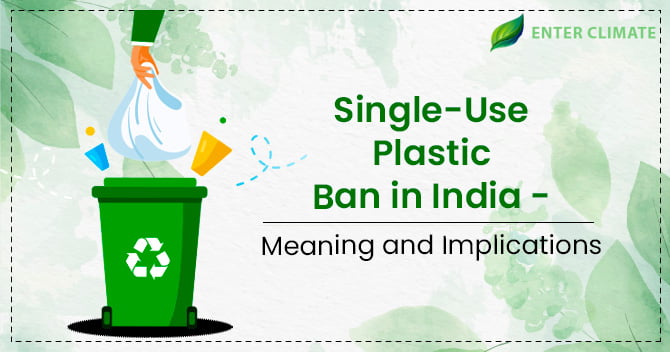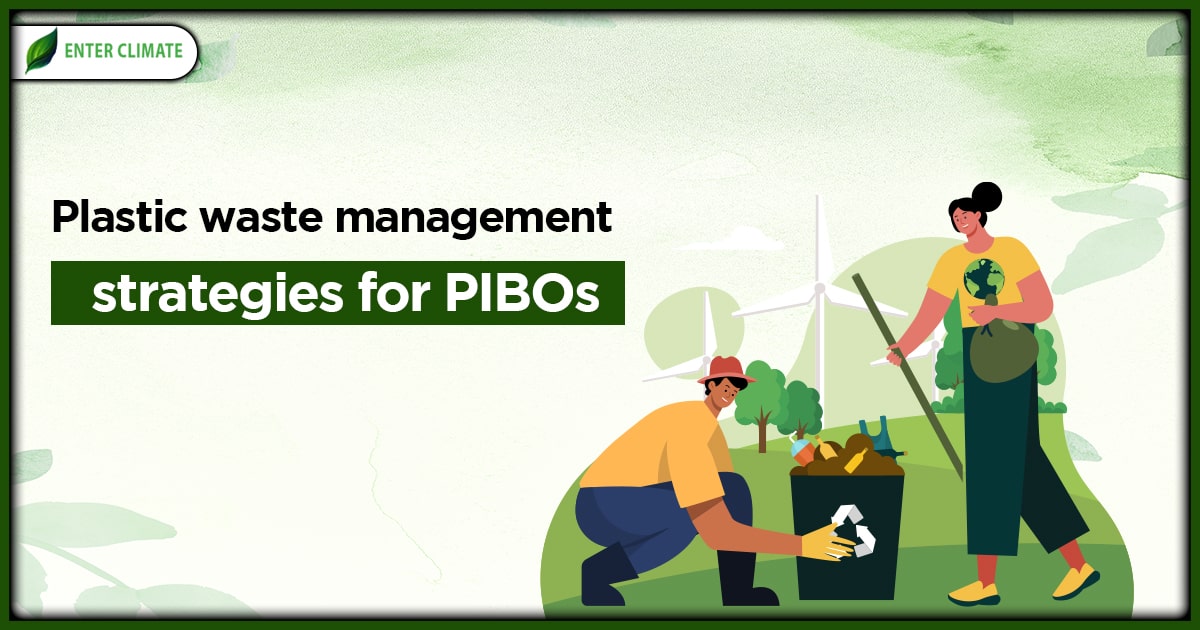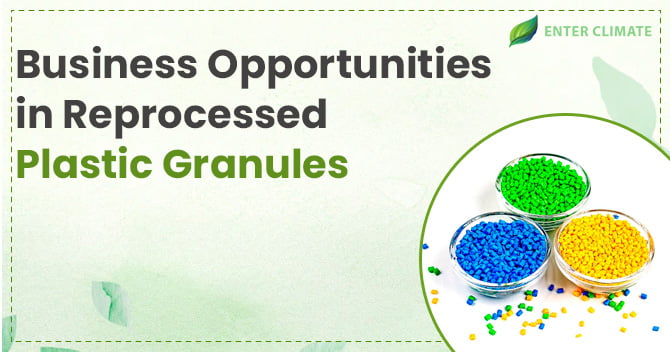Single-Use Plastic Ban in India – Meaning and Implications
 19 Jul, 2022
19 Jul, 2022 
Ministry of Environment, Forest and Climate Change has notified a ban on single-use plastic. It has prohibited the production, stocking, distribution, sale and use of Single-Use Plastic Items (SUP) in the country. The notification regarding the ban came in September 2021 in the form of Plastic Waste Management (Amendment) Rules, 2021, and the Single-Use Plastic Ban was set to be implemented from the 1st of July, 2022. The changes in the rules were by the recommendations of a 13-member committee comprising scientists and technical experts and constituted under the Department of Chemicals and Petrochemicals. The committee identified and recommended prohibited items based on an index that determined the utility and the adverse impact of SUP items on the environment. Factors like hygiene, product safety, essentiality, socio-economic impact, collectability, recyclability, the possibility of end-of-life solutions, the environmental impact of alternate materials and their littering propensity were also considered. The Central Pollution Control Board and State Pollution Control bodies have been tasked to monitor the Single-Use Plastic Ban, identify violations, and impose penalties already prescribed under the Environmental Protection Act, 1986.
Meaning of Single-Use Plastic Ban for India
Plastic has slowly replaced all other materials in the packaging industry because it is cheap and readily available. Earlier efforts like the ban on plastic bags of thickness less than 50 microns and on plastic sheets that are not a part of multi-layered plastic packaging have helped curb microplastics’ menace to some extent. Currently, the permissible thickness of plastic bags is 75 microns and above and will be increased to 120 microns as per the new rules, which will come into effect on the 31st of December 2022. This staggered plan on thickness is being implemented to protect small businesses and give the traders time to adapt. According to experts, an increase in thickness will ensure the high recyclability of polythene bags as they will last longer in a circular economy model and won’t disintegrate into microplastics that easily. Thicker poly bags will be comparatively costly, and the sellers and consumers using plastic bags will be forced to move towards alternatives. All these recent changes confine with the GOI resolution to phase out Single-Use Plastic by 2022.
Single-Use Plastic items that have been banned
The amended rules also listed the items covered under the single-use plastic ban. Around 20 such items like Plastic flags, candy sticks, ice-cream sticks, ear cleaning buds with plastic sticks, plastic sticks for balloons, polystyrene (aka thermocol) for decoration, cutlery such as forks, spoons, knives, straws, plates, cups, glasses, trays, wrapping or packing films around sweet boxes, invitation cards, and cigarette packets, plastic or PVC banners less than 100 microns, stirrers come under the single-use plastic list and have been banned. The remaining SUP in use, like the plastic packaging waste not covered above, will be collected and managed through the Extended Producer Responsibility of the Producer, importer and Brand owner (PIBO). The third category of plastic items in line to be banned is non-woven bags below 240 microns in thickness. The ban is proposed to start on the 30th of September, 2022. The ban will, however, not apply to commodities made of compostable plastic as they are non-toxic and decompose back into biomass.
Implications of the Single-Use Plastic Ban
A big concern in the manufacturing sector is this ban’s implication for the economy of small businesses. Some estimates suggest that there are a total of 50,000 plastic manufacturing units in India and about 90 per cent of these are MSMEs. Single-Use Plastic Ban will impact many industries, including FMCG[1], which is heavily dependent on plastics and is expected to be hit the most.
- Around 43 per cent of the plastic usage in India is in the packaging industry, and a significant portion of this value is single-use plastic. On average, 0.2 kg per capita of SUP was being produced in the country.
- Some industries in India have already been dealing with a consumption slowdown in the wake of the pandemic. Introducing alternatives to SUP may push up costs even more and affect the demand for related items.
- There are around 683 registered units involved in SUP production in India. With a cumulative capacity of 2.4 lakh TPA and operational capacity of 2.3 Lakh tonnes, 4-7 per cent of raw materials used in the manufacturing process is SUP. The ban means 4-7 per cent of raw materials could be wiped out in the manufacturing chain.
- Employment in the packaging industry is also significant since it represents the largest share of single-use plastic applications. Single-Use Plastic Ban can affect employment in this sector too.
- Single-Use Plastic Ban may also impact demand for petroleum products like naphtha, which is used in manufacturing oil-based plastics.
Paper rolls and straws, biodegradable and compostable plastic, paper-based earbuds and wooden candy and ice cream sticks are alternative choices that are biodegradable. But many SUP will be hard to replace as some of these substitutes can hardly provide an alternative to single-use plastic at a similar cost. Also, they don’t always guarantee a positive environmental benefit when considering the whole life cycle of the raw material. Keeping track of government regulations, getting EPR authorisation and planning alternatives at the right time is crucial in the present situation. Proper business strategies and guidance from experts working in the field have helped many manufacturers to grow their business in the plastic industry.
Conclusion
Plastic, whether SUP or reusable, will create the problem of pollution if discarded irresponsibly. All plastic products have the potential for global warming, acidification, eutrophication, aquatic toxicity etc. All petroleum-based plastics are non-biodegradable irrespective of their thickness and have the potential to disintegrate into smaller microplastics. One might argue that the cost involved in recycling SUP is higher when compared to other waste, and Single-Use Plastic Ban is in the economy’s best interest. But any single-use items are harmful to the environment regardless of the material waste generated in the end. What alternatives take the place of SUP is yet to be seen. We must realise that banning one item leads to an increase in the use of its alternative- paper, wood etc. that too have their share of adverse effects on the environment. So considering only the biodegradability aspect and banning the use of single-use plastics is only a partial solution to the bigger problem. Banning or imposing a premium price on any single-use items, plastic or otherwise, will work if we, consumers of such products, limit their use and discard them responsibly. Any legislation regarding Plastic Waste recycling will succeed when the entities that generate that waste also take the initiative to reduce, replace and reuse plastic.













